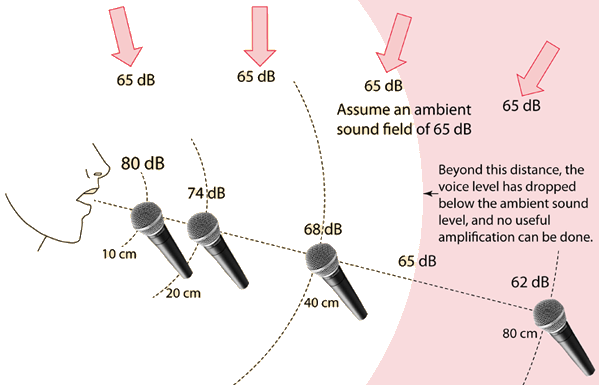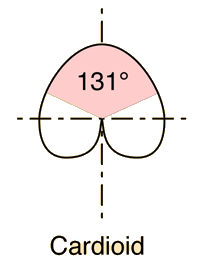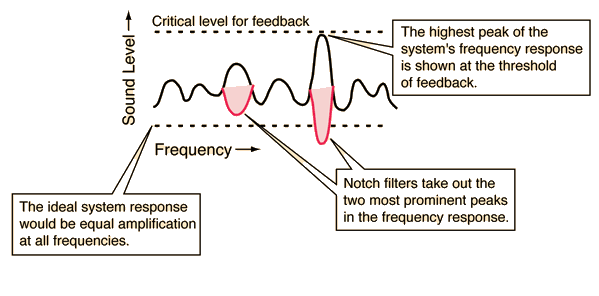Moving Microphone Closer to Source
It is sometimes hard to convince a performer that one should move closer to the microphone rather than farther away if the system rings from feedback. Moving the source closer to the microphone and decreasing the amplification improves the chances of getting an adequate sound signal to the listener. The improvements obtainable by close-miking can be modeled fairly accurately from the simplified amplification system because the source is typically close enough for the microphone to be in the direct sound field where the inverse square law holds. When the performer doubles the distance to the microphone, their signal into the microphone drops by 6 decibels while the input from reverberant sound and noises in the auditorium do not change appreciably. Therefore holding the microphone closer not only strengthens the signal to the microphone but also increases the signal-to-noise ratio and the potential acoustic gain.

| Ways to increase P.A.G. |
Sound reproduction concepts
| HyperPhysics***** Sound | R Nave |

